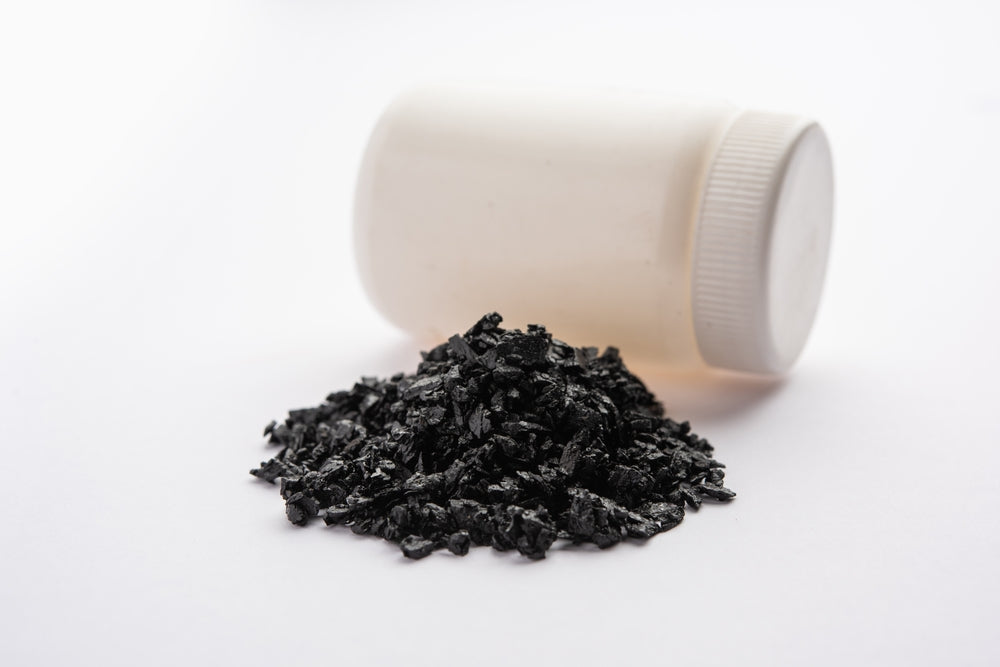Shilajit Side Effects and Potential Risks

Share
Shilajit, an ancient and revered substance derived from the Himalayan mountains, has captivated the attention of health enthusiasts worldwide due to its many health-enhancing properties. Regarded as a natural powerhouse of nutrients and minerals, shilajit has been a cornerstone of traditional Ayurvedic medicine for centuries. However, despite its potential benefits, it is important to be aware of potential shilajit side effects and how to avoid them. This article explores the topic of shilajit side effects, as well as how the side effects of shilajit may differ between genders.
What Is Shilajit?

Shilajit is the result of the gradual decomposition of plant matter and microbial substances over extended periods, culminating in a dark, resinous substance. Packed with minerals, fulvic acid, and other organic compounds, shilajit has been praised for its potential to improve energy levels, boost vitality, and address various health concerns. However, as with any natural remedy or supplement, a balanced understanding of its potential side effects is essential.
To learn more about shilajit, read our article "What Is Shilajit?"
What Are the Common Side Effects of Shilajit?
Though generally considered safe when used in appropriate doses, there are specific potential side effects that individuals should be aware of before incorporating shilajit into their health regimen:
1. Digestive Discomfort
Some users of shilajit have reported experiencing mild digestive issues, including nausea, stomach cramps, and diarrhea, shortly after consuming shilajit. These discomforts tend to be transient and usually diminish with consistent use over time. It is worth mentioning that these side effects are typically more common with raw shilajit resin and less common with high-quality shilajit extract.
2. Allergic Reactions
While allergic reactions to shilajit are extremely rare, allergic reactions can occur in sensitive people. Symptoms might range from skin rashes and itching to more severe manifestations, such as swelling of the face and throat, accompanied by breathing difficulties. Anyone with a history of allergies should exercise caution and consider a patch test before consuming shilajit. A patch test involves applying a small amount of a substance, like shilajit, to a discreet area of skin, such as the inner forearm. Leave it on for 24 to 48 hours without getting the area wet, and then check for any signs of redness, itching, or swelling. This helps determine if you might have an allergic reaction or skin sensitivity to shilajit before using it more extensively.
3. Blood Sugar Fluctuations
Shilajit may have an impact on blood sugar levels. Individuals with diabetes or those taking medications that affect blood sugar levels should consult a healthcare professional before using shilajit.
4. Medication Interactions
Shilajit has the capacity to interact with certain medications, potentially affecting their absorption, effectiveness, or metabolism. Individuals on prescribed medications should seek medical advice before incorporating shilajit into their routine.
Gender-Specific Side Effects of Shilajit

Interestingly, shilajit's impact on individuals can differ based on gender:
1. Shilajit Side Effects for Females
Although generally considered safe for women, shilajit's effects on the female reproductive system remain underexplored in scientific research. While shilajit has been reported to have beneficial effects on women's hormones, some women have reported alterations in their menstrual cycles or hormonal fluctuations after shilajit consumption. (1) Given shilajit's potential influence on hormones, it is advisable for women to closely monitor any changes and consult a healthcare professional if concerns arise.
2. Shilajit Side Effects for Males
For men, shilajit has garnered attention as a potential natural testosterone booster. Research indicates that shilajit might positively impact testosterone levels, yet it is important to follow the recommended dosage, as excessive use could potentially lead to hormonal imbalances. (2) Men seeking to leverage shilajit for its testosterone-enhancing properties should exercise moderation and follow product label instructions, as unregulated hormonal changes could result in unintended consequences.
Is Shilajit Safe?
The safety of shilajit as a dietary supplement is a topic of significant interest as its popularity continues to grow. Generally, shilajit is considered safe when used responsibly, but there are essential factors to consider before making it a part of your health routine.
Shilajit's centuries-long history of use in traditional medicine showcases its potential benefits. When sourced from reputable suppliers and consumed within recommended dosages, shilajit is unlikely to lead to any adverse effects. Nonetheless, it's crucial to recognize that individual responses can vary.
While both raw resin and standardized extracts are available, the choice of form significantly impacts the safety consideration. Shilajit extracts, formed through a careful standardization process, undergo stringent quality control measures. This process allows for the identification of contaminants and impurities, making shilajit extracts a safer option compared to raw resin.
Shilajit can definitely be incorporated into one's wellness journey safely. Opting for shilajit extracts enhances this safety due to their standardized composition and thorough testing. However, consulting a healthcare professional before adding any supplement to your routine is a wise approach to ensure it aligns with your individual health circumstances.
Summary
Shilajit's benefits as a natural health supplement are undeniable, yet its potential side effects are worth consideration, especially for sensitive groups or people taking medications. While many individuals experience no adverse effects from shilajit when used responsibly, it is always beneficial to be aware of potential side effects when taking any supplement.
Shilajit comes in various forms, and shilajit extracts tend to be the safest option for shilajit supplements as they undergo thorough testing for contaminants, unlike most raw shilajit resins. As with any dietary supplement, consulting with a healthcare practitioner before use and maintaining a balanced approach is recommended to reap the potential benefits while mitigating potential risks and side effects.